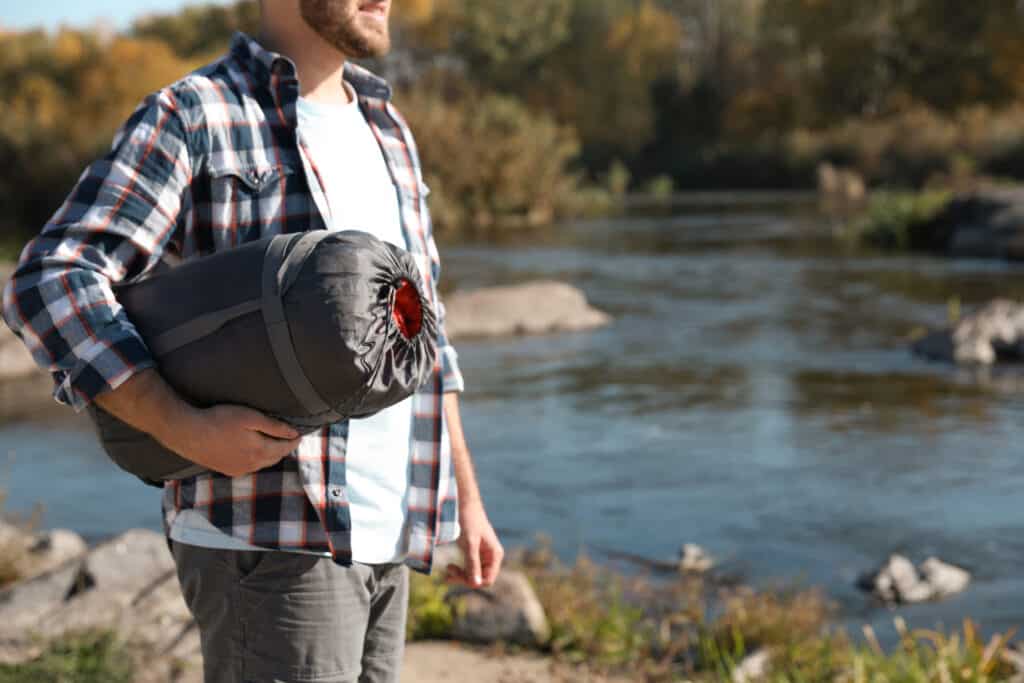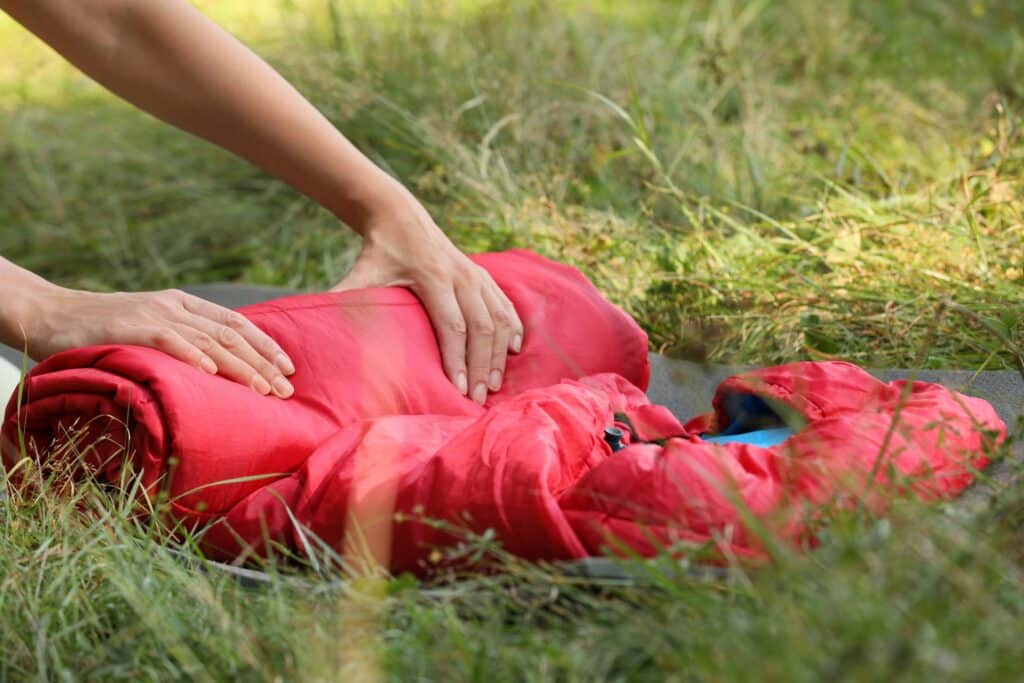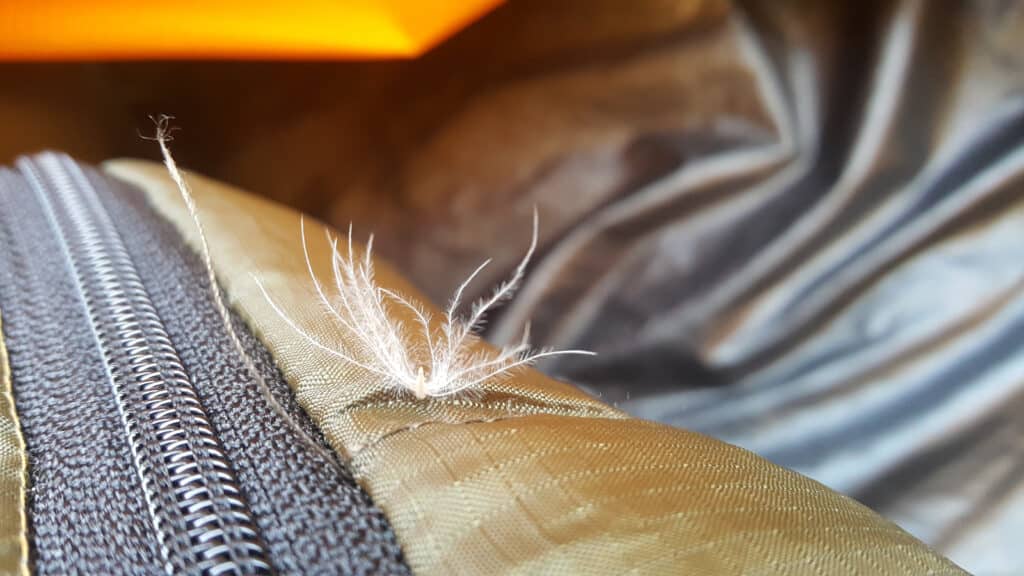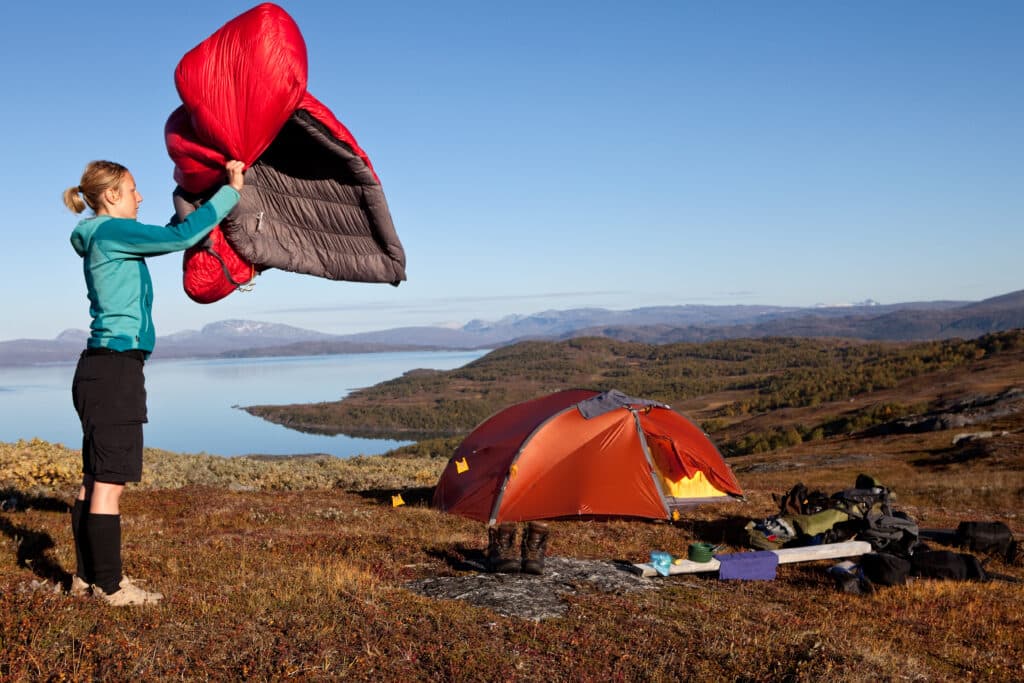Are Sleeping Bags Warmer Than Duvets?
Some of the links below are affiliate links. As an Amazon Associate, I earn from qualifying purchases. This means that, at zero cost to you, I will earn an affiliate commission if you click through the link and finalize a purchase.
There can be a large debate on whether or not sleeping bags are warmer than duvets, each have their own technologies which make them warm and comfortable.
In reference to camping, sleeping bags are more common and can be said to be warmer. As you are in a tent you have less layers and protection between yourself and the weather conditions outside. This means the layers you have that are tightly wrapped around your body make you feel warmer.
In this article, we are going to break down the elements in which sleeping bags and duvets have that make them warm so you can decide if a duvet or sleeping bag is warmer for you.
What Is A Sleeping Bag Made From?
A huge number of different materials are used to make both the outer shell and inner lining of a sleeping bag.

Starting with the lining, the most common materials are nylon, polyester, and taffeta. They aren’t very durable at all and are often recommended for use in indoor camping trips or family-oriented ones. Ideally, you shouldn’t be in a situation where the durability of one of these bags can be tested. The fabric is, however, breathable and low-cost.
Ripstop
Ripstop is also used in the making of sleeping bags. Ripstop fabric is nylon or polyester which has been reinforced with other, heavier, threads. This makes the overall material stronger while also maintaining breathability. This is ideal for more testing camping trips, as well as bags that are to be used on a regular basis.
Dryloft
A more premium material used for the outer shells of sleeping bags is DryLoft. This material offers superb protection from moisture on the outside, while it also allows for heightened breathability on the inside. These bags are great for four-season camping and are priced to match.
DryLoft bags are found much less frequently than other bags owing to their high cost, though making the investment might be worth it if you’re planning to do a lot of camping.

In terms of the lining of sleeping bags, there are three main materials used commonly.
Firstly, we have three materials that are often banded together: nylon, polyester, and taffeta. These materials are great for insulating sleeping bags and are used in a number of sleeping bags from low to high end.
Secondly, polycotton is used in a number of budget sleeping bag options. The material is very comfortable against the skin, but it typically takes longer to dry. This means that it isn’t really suitable for cooler climates.
Finally, silk is used in very high end sleeping bags. It is extremely soft and breathable, while also being great for insulation. That said, it is much more vulnerable to tears than other materials and can be harder to repair as well.
What Is A Duvet Made From?
Duvets are, of course, a really popular choice around the world. For that reason, there are a number of different duvets on offer for people to choose from.
1. Hollowfibre
Hollowfibre is a particularly popular choice for a number of reasons. Principally, people love these duvets as they’re affordable, and hypoallergenic – which is ideal for almost everyone looking to pick up a duvet. Handily, hollow fiber duvets are also machine washable.

Most options have their downsides, however, and the downside of a hollow fiber duvet is that the filling can clump together over time. This means that they will, eventually, become unusable.
2. Feather and Down
Feather and down duvets are very popular the world over and have excellent insulation and ventilation. Feather and down duvets retain heat very well, as well as preventing overheating brilliantly. They can also last a lot longer than other duvets if well cared for.
On the other hand, feather and down duvets can be more expensive than hollow fiber and have to be professionally laundered. Furthermore, people can be allergic to the filling.
There are a number of alternative duvet filling options, though hollow fiber and feather and down are the most popular by far.
Among the other options are wool, silk, and microfiber.
- Wool retains heat well and is resistant to common allergens, though it can be expensive and seem flat compared to other fillings.
- Silk can keep you very warm while preventing overheating, though it is extremely expensive.
- Finally, microfibre duvets are very lightweight and soft, plus anti-allergen options are available.
On the downside, though, microfiber duvets don’t regulate heat very well at all.
What Is Tog?
‘Tog’ is a very commonly used word with both duvets and sleeping bags. That said, it often isn’t explained very well at all. A tog is the warmth to weight ratio of a duvet or sleeping and the higher the tog value is, the better it will insulate you.
Generally speaking, you’d need a 3 to 4.5 tog duvet for the summertime, and a 12 to 13.5 tog duvet for the winter. This is handy to know for duvets, as you can change which duvet you’re using depending on the temperature in your house.

For sleeping bags, however, you’ll likely be trying to travel light. This means that knowing what tog to use for what temperature is very convenient. There are a whole host of charts and graphs online designed to help you figure out what to wear when sleeping in a sleeping bag. This helps us to figure out how well sleeping bag togs insulate you.
- Generally speaking, 0.2 tog sleeping bags are suitable for very hot weather, from 27˚C and up. Depending on your preference, you almost certainly won’t want to wear insulating clothes.
- 0.5 tog sleeping bags are useful for warmer temperatures like 24-27˚C, and you might feel the need to wear some light pajamas as the temperature drops into the nighttime.
- 1.0 tog sleeping bags are typically ideal for 21-24˚C temperatures, though pajamas, again, may be a great idea here.
- 2.5 tog sleeping bags are great for insulation and can be used anywhere from 15-21˚C. At cooler temperatures, however, you may need to consider wearing some thermal pajamas designed to help you retain heat.
- 3.5 tog sleeping bags are superb at retaining heat, to the degree that it wouldn’t be advisable to use them in temperatures higher than 20˚C. 3.5 tog bags are commonly used between 15 and 18˚C, though, again, thermal clothing may be needed for when the temperature drops over the night.
Conclusion
It’s quite difficult to say whether sleeping bags are more or less warming than duvets. The principle behind both of them is extremely similar, to the degree that they can keep you similarly warm. The dividing factor, however, is draughts. A sleeping bag can, essentially, be sealed around you. This would allow you to keep out any draughts, and ensure that you retain heat very well.
Comparatively, a duvet may allow for any number of draughts to get under and cause you to lose a little heat. For that reason, we’d conclude that sleeping bags are warmer than duvets, though there isn’t much difference in it.

When camping, it’s debated whether you should bring a sleeping bag or a duvet. If you’re planning on simply driving to a campsite and taking your equipment out of the car to set up, then a duvet may be preferable. It could allow you to set up a small camp bed, and thereby have a little more room to move and become comfortable. On the other hand, you may choose to take a sleeping bag if you’re concerned about space.
A great example of this could be if you were hiking, and needed something that would fold or roll up to be very small and kept within your backpack.
To conclude, we think we’d typically go for a sleeping bag rather than a duvet on a camping trip. It allows you to take more things with you on the whole, plus they can be a little warmer too.

